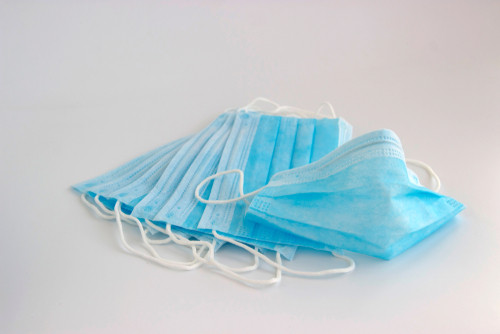Popular Reads
Top Results
Can't find what you're looking for?
View all search resultsPopular Reads
Top Results
Can't find what you're looking for?
View all search resultsWhat's the best type of mask for COVID-19 protection? Scientists investigate
Change text size
Gift Premium Articles
to Anyone
F
ace masks have become part of everyday life since the onset of the pandemic, but they should be chosen with care to effectively limit the spread of COVID-19.
A research team in the US has investigated the filtration efficiency of various types of mask worn by the public and professionals. They found that when worn properly, certain nylon masks could be up to 79 percent effective at blocking particles that could carry the virus.
In partnership with the US Environmental Protection Agency, scientists from the North Carolina School of Medicine studied the levels of protection offered by several types of face mask, from medical masks to consumer-grade masks and improvised face coverings. They assessed the protection that each mask offers to its wearer when exposed to others who may be infected.
To achieve this, they used a method based on the Occupational Safety and Health Administration (Osha) Fit Test to determine the fitted filtration efficiency of the masks. In total, 12 types of facial protection were tested, worn by an adult male who made a series of repeated movements of the torso, head and facial muscles.
Published in the journal Jama Internal Medicine, the research reveals that improvised masks can prove effective, so long as they are properly fitted and worn.
Moreover, the researchers explain that unmodified medical procedure masks with ear loops -- commonly known as surgical masks -- offer 38.5 percent filtration efficiency. However, this can be improved to 60.3 percent when the ear loops are knotted in a specific way to tighten the fit, or to 80 percent by adding a layer of nylon.
Read also: Can surgical masks be reused?
As for consumer-grade masks, it was the “two-layer woven nylon mask, with ear loops and nose bridge, washed, no insert” which came out on top (79 percent), closely followed by the “two-layer woven nylon mask, with ear loops and nose bridge, and one non-woven insert” (74.4 percent).
Note that a cotton bandana folded “bandit” style proved 49 percent effective, while a three-layer woven cotton mask with ear loops was the least effective choice (26.5 percent).
As for medical masks, the 3M 9210 NIOSH-approved N95 respirator mask proved most effective (98 percent), while a surgical mask with ties offered 71.4 percent effectiveness. A surgical mask with ear loops was 38.5 percent effective, unless its loops were tied and corners tucked in (60.3 percent).
“While modifications to surgical masks can enhance the filtering capabilities and reduce inhalation of airborne particles by improving the fit of the mask, we demonstrated that the fitted filtration efficiencies of many consumer-grade masks were nearly equivalent to or better than surgical masks,” said co-first author Phillip Clapp, Ph D, an inhalation toxicologist and assistant professor of pediatrics at the UNC School of Medicine.
As well as informing consumers about the effectiveness of the various types of face masks on offer, and the best ways of wearing them, the findings could also help contribute to designing the “ultimate” face mask to help halt the spread of the virus.











